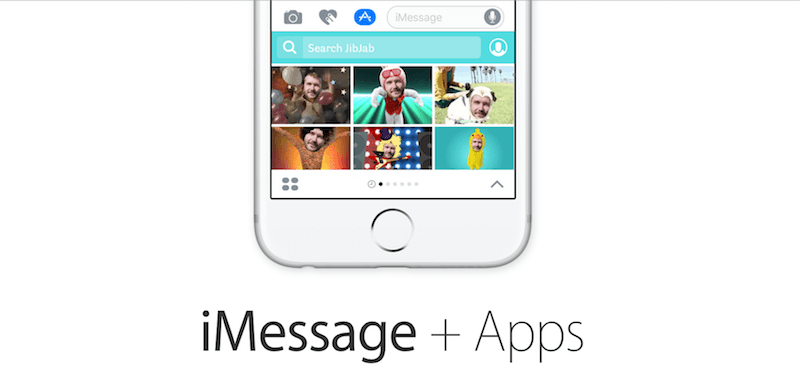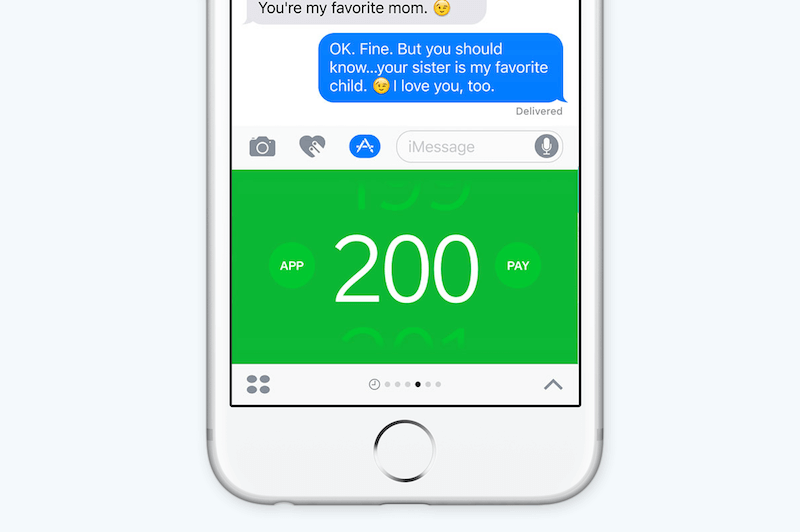
One of the most exciting parts of iOS 10 is how open default apps and services are going to be. And one of the most prominent new places developers will be able to engage their users is going to be iMessage conversations. iOS 10, with iMessage apps and iMessage App Store is still 3 months away.
But Apple told the developers how iMessage apps will work and how they can get started developing them in the Platforms State of the Union session that happened right after the Keynote.
If you missed the session (it’s open for all to view) or don’t intend to watch it (it’s a bit too developer-ey after all), here’s the gist of how iMessage apps will work in iOS 10.
iMessage Apps Are Extensions

iMessage apps work same as extensions. If you already have an app and you want to provide iMessage functionality, you won’t have to create an entire new app. You can just plug in the iMessage functionality and submit it to the App Store.
iMessage App Store

But there’s also going to be a mini version of the App Store, especially for iMessage apps, integrated right inside the Messages app.
The user will be able to browse all apps compatible with iMessage and install them – right there.
iMessage Apps Are Not Chatbots

The word chatbots were not uttered a single time in the entire keynote and unlike what Google, Facebook and Microsoft are doing with chat assistants, iMessage apps are just that – apps.
Yes, they’re smaller – like mini apps – but you still use them via a visual user interface. You don’t have to type a command to share a song from Apple Music, you tap the “Music” app icon from the keyboard and tap to select the song.
And personally, I like this approach. You don’t need to figure out the language and you don’t need to type 15 different commands for ordering a pizza. If you’re interested, read through this extensive article that explains why chatbots might not be the next big thing (and why apps still rule).
iMessage Apps Will Be Collaborative
iMessage apps will show up as cards inside the conversation and they’ll be collaborative. Meaning that all the users in the conversation will be able to take action on the same card and the card will update with new stuff dynamically. In the WWDC keynote, the demo showed the presenter collaborating on dinner take outs with other users in the conversation and the card being updated live.
Collaborative Messages Will Be Grouped
You’ll be able to keep track of all the changes made to a collaborative card sent through the thread.
If 5 people choose their order for the food, you won’t see five different cards. You’ll just see one. Tapping it will show you all the details of who’s ordered what. This means your conversations won’t be littered with cards generated by iMessage apps.
The Recipient Doesn’t Need To Have The App Installed

When you’re sending something – say an animated GIF using a third party iMessage app, the recipient will be able to see the message even if they don’t have the app installed.
Also, they’ll see a small “Get app” text at the bottom of the preview that will allow them to download the app.
No Apps Can Access Your Conversation
Everything you type in the conversation and the people in it will never be seen my any app. All your stuff is private.
Apps Run Inside The Keyboard (and Out)

You’ll be able to simply swipe left/right in the keyboard view to switch between apps and use them right there.

Preferably, the iMessage Apps should be simple enough that they work inside the keyboard view. But they also support Adaptive Layout so they can go full screen either by a user interaction or by default, if more room is needed.
Sticker Apps Need No Programming

Apple hopes that lots of creative people submit awesome sticker packs to the iMessage store. And they’re making it really easy to make sticker packs. Apple things a normal person will be able to submit a sticker pack using Xcode – without writing a single line of code.
And in the Platforms State of the Union, Adele Peterson showed it’s possible to build a sticker pack in less than 2 minutes.
Create a new project, select stickers template, add yours stickers, add icons and that’s pretty much it. Open the simulator and start playing around. Even the “peeling” gesture works in the simulator.
Developers Can Get Started Right Now

Even though iOS 10 is not coming out till Fall 2016, developers can download the latest SDK, the latest version of Xcode and get started. To make development easier, Apple has built a special iMessage apps simulator as well.
What Kind of iMessage Apps Do You Want To See?
Are there some specific apps you really hope developers create for the iMessage App Store? Share with us in the comments below.
Check out our iOS 10 coverage below:
- Top 44 iOS 10 Features for iPhone
- Top 10 iOS 10 Features for iPad
- Top 25 Hidden iOS 10 Features
- iOS 10 Hand-on: What’s New in Messages
- iOS 10 Hands-on: What’s New in Home Screen and Notification Center
- iOS 10 Hands-on: What’s New In The Lock Screen
- iOS 10 Hands-on: What’s New in the Redesigned Control Center
- iOS 10 Hands-on: What’s New in Photos
- iOS 10: How Siri Integration With Apps Will Work
And also our macOS Sierra coverage:
- Top 11 macOS Sierra Hidden Features
- List of Macs compatible with macOS Sierra
- iOS 10 and macOS Sierra: Apple’s Ecosystem Stickiness Gets Stronger
- Safari in macOS Sierra will Automatically Deactivate Flash, QuickTime, and Other Plug-Ins by Default
- macOS Sierra References OLED Touch Bar and Touch ID for Upcoming MacBook Refresh